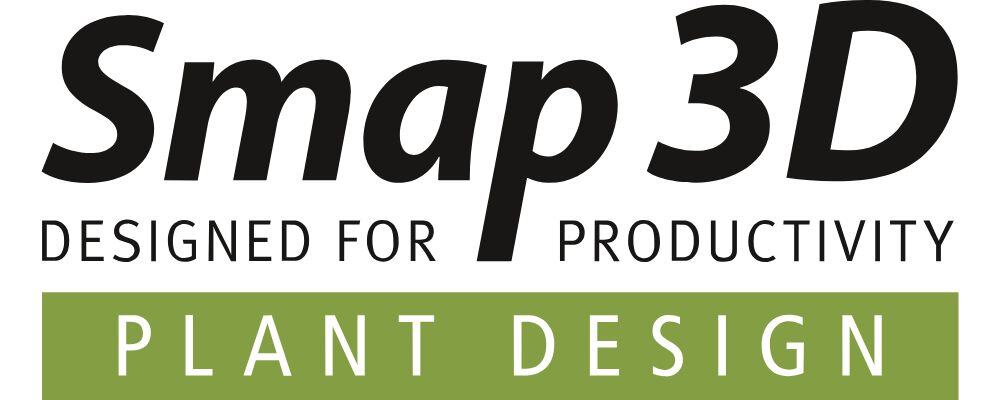Smap3D Plant Design with SOLIDWORKS | P&ID
Start: 21. April 2025, 16:00 Uhr

Once P&ID diagrams have been created, they must be planned in a 3D environment in accordance with the definitions made there. It is particularly helpful if the piping can also be designed within the mechanical design solution.
Smap3D Piping is a powerful tool for 3D planning of piping in machines in plants. As an add-in for the well-known CAD systems SOLIDWORKS, Inventor and Solid Edge, it enables fully integrated design without media discontinuity. This turns a “normal” MCAD into a fully-fledged plant engineering solution!
Thanks to a wide range of functionalities, diverse automation routines and the use of pipe classes and standard parts libraries, even complex piping systems can be planned efficiently and reliably. Thanks to the connection to Smap3D P&ID, the definitions and information of the 2D flow diagrams can be transferred directly into Smap3D Piping and processed on this basis.
Smap3D Piping really comes into its own when changes are made, thanks to sophisticated logics for the automated recalculation of entire pipelines, making it an indispensable tool for 3D designers.
Start: 21. April 2025, 16:00 Uhr
Start: 23. April 2025, 15:00 Uhr
Start: 24. April 2025, 16:00 Uhr
Start: 6. Mai 2025, 15:00 Uhr
Smap3D Piping automates the planning and modification of 3D pipelines in 3D assemblies. A task that a designer or piping planner would otherwise have to perform manually in individual steps with a great deal of effort. The basis of this highly automated 3D piping planning is the use of pipe specifications. These are specification tables in which the relationship between the piping components (fittings, valves, etc.) and piping characteristics (diameter, pressure, temperature, medium, etc.) is defined once on a company-, department- or project-specific basis. Smap3D Piping contains additional individual functions and settings for each pipe spec. These also ensure an automated design process.
When planning pipelines with pipe specs, Smap3D Piping automatically generates the complete pipeline after selecting the required pipe spec, diameter and other pipeline features. The software automatically places the fittings required for the pipe run for a variety of standard situations (e.g. bends, T-pieces, flanges, seals) and generates all pipes between the placed fittings. This saves a lot of time and offers process reliability.
Additional components such as fittings and instruments can be added to an existing pipeline at any time. Smap3D Piping uses the pipe spec specifications used when creating the pipeline and only allows the installation of components specified therein. Once these have been placed, Smap3D Piping recognizes the new situation and corrects it automatically. This method of working also ensures a high level of process reliability in 3D piping planning.
To generate pipelines, Smap3D Piping provides a variety of automatic placement routines (QuickPlace methods) for fittings in standard situations in 3D pipelines.
The most important routines are the automatic placement of
Smap3D Piping automatically updates the pipeline when changes are made to the pipeline route, the centerline, by using information already stored about the corresponding pipe class. This happens, for example, when adding or deleting fittings and pipes.
When changing the composition of existing pipelines, for example when changing the pipe class, the diameter or another pipe class feature, Smap3D Piping proceeds in the same way and uses the saved definitions from the pipe class.
To create reduced or extended pipelines, the user only has to define the desired diameter and the position of the reduction or extension component. The placement of the component and the complete conversion of the modified pipeline to the new diameter are carried out automatically by Smap3D Piping.
With all the automatic features offered by Smap3D Piping, a user is still able to extend and edit a pipeline according to individual requirements with various functions, such as using non-unique components, replacing parts or placing parts.
For software-internal plausibility checks, necessary parameters - e.g. maximum and minimum pipe length - can be defined in the pipe specs. The pipe specifications are stored centrally in the system as a single file. This central definition
Smap3D Piping contains all the necessary functions for creating, maintaining and managing pipe specifications (pipe class editor) as standard. Sample pipe specs are supplied with the software. These can be used directly or copied and modified according to your own requirements.
to support the pipeline planner:
A user draws and defines the desired piping routes in the 3D assembly as centerline paths from 3D lines (basic functions in the CAD system).
Smap3D Piping analyzes these drawn line elements and automatically creates the pipeline paths according to logical criteria. A pipeline path describes the route of a continuous pipeline from one connection to another, regardless of how many line elements make up the path in between.
Another new pipe path always begins at branches. Piping paths are associative to the 3D line elements drawn in the CAD system. In Smap3D Piping, they form the basis for the generated 3D pipeline consisting of fittings and pipes.
When creating pipes with pipe classes, Smap3D Piping can also process any non-circular cross-sections. Cable ducts, routes, ventilation ducts, etc. can be created quickly and efficiently in the 3D assembly. The software uses similar fully automatic placement routines as for round cross-sections.
As a special functional extension, the orientation of the corresponding components is taken into account for the form fittings: left/right and up/down.
and many more …
Smap3D Plant Design GmbH
Am Marktplatz 7
93152 Nittendorf
Germany
Tel.: +49 9404 963910
E-Mail: info@smap3d.com
Smap3D Plant Design, LLC.
260 Arbor Springs N Dr.
Newnan, GA30265
USA
Phone: +1 408 484 6404
E-mail: info@smap3d.com
